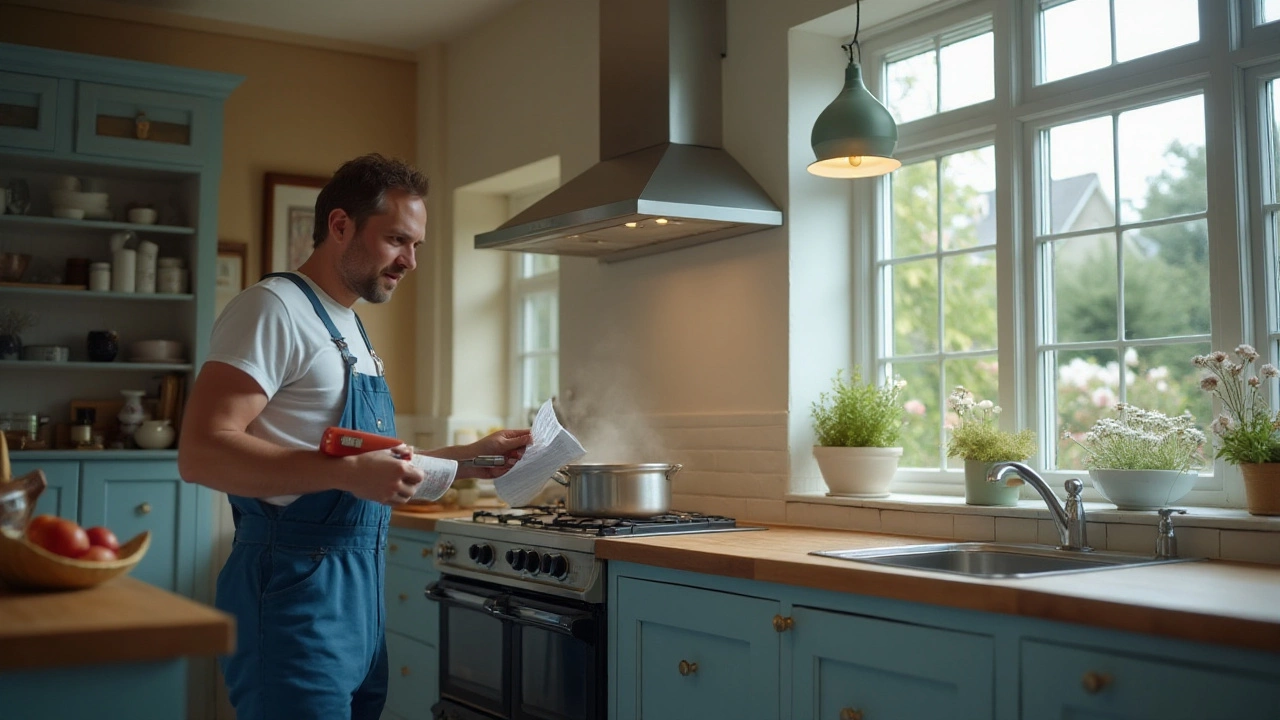Kitchen Fan Troubleshooting: Simple Fixes for Common Problems
When your kitchen fan starts making weird noises or just won’t pull air, it’s easy to feel stuck. The good news? Most issues are quick to spot and can be fixed with a few tools and a little patience. Below we walk through the typical symptoms, what causes them, and how you can get the fan humming again without calling a pro.
Common Kitchen Fan Issues
1. Loud or rattling noise. A clatter usually means something is loose – a fan blade, a mounting screw, or a piece of debris that fell into the motor housing. Dust builds up over time and can also make the motor whine.
2. Weak suction or no airflow. If the fan spins but the airflow feels thin, the blades might be dirty, the motor could be worn, or the vent duct is blocked. Check the external vent for leaves or bird nests.
3. Fan won’t turn on. This can be a power issue, a blown fuse, or a faulty switch. Sometimes the motor simply overheated and shut down.
4. Intermittent operation. The fan starts, stops, then starts again. A loose connection in the wiring or a thermostat that’s tripping can cause this.
5. Burning smell. A faint smell of burnt plastic signals an overloaded motor or a loose wire touching the housing. Turn the fan off immediately and investigate.
Step‑by‑Step DIY Fixes
Step 1: Safety first. Unplug the fan or switch off the circuit breaker. Even if the fan is hard‑wired, cut the power to avoid shocks.
Step 2: Clean the fan. Remove the grill – usually held by a couple of screws or clips. Use a vacuum with a brush attachment to pull out dust from the blades and motor housing. Wipe the blades with a damp cloth; let them dry fully before re‑assembly.
Step 3: Tighten everything. Check that the grill, mounting brackets, and any screws around the motor are snug. Loose bolts are a frequent source of rattling.
Step 4: Inspect the motor. Look for signs of wear: burnt spots, frayed wires, or a wobbling shaft. If the motor feels hot to the touch after a short run, it may need replacement.
Step 5: Clear the vent. Go outside and locate the vent cap. Remove any debris, leaves, or nests. A quick hose blast can clear stubborn blockages.
Step 6: Test the switch and wiring. If the fan still won’t start, use a multimeter to check continuity on the switch and the power cord. Replace any component that shows no continuity.
Step 7: Re‑assemble and run a test. Put the grill back, secure all screws, restore power, and turn the fan on. Listen for smooth operation and feel for strong airflow.
If you hit a snag – like a motor that still overheats or a persistent burning smell – it’s time to call a qualified technician. Trying to force a failing motor can cause more damage and become a safety hazard.
Regular maintenance keeps your kitchen fan from turning into a costly nightmare. A quick dust‑off every few months, checking the vent, and tightening any loose screws can extend the fan’s life by years.
Now you have the basics to diagnose, fix, and maintain your kitchen fan. Next time you hear that odd whine, you’ll know exactly what to do – and you’ll save time, money, and the frustration of a stagnant kitchen.
Expert Guide to Repairing Kitchen Extractor Fans Effectively
0 Comments
Kitchen extractor fans can sometimes break down, leading to insufficient ventilation and unpleasant odors lingering in your home. Repairing the fan could be a cost-effective solution compared to purchasing a new one. This article discusses common issues that extraction fans face and provides practical tips for fixing them, ensuring your kitchen stays fresh and comfortable.
Read More